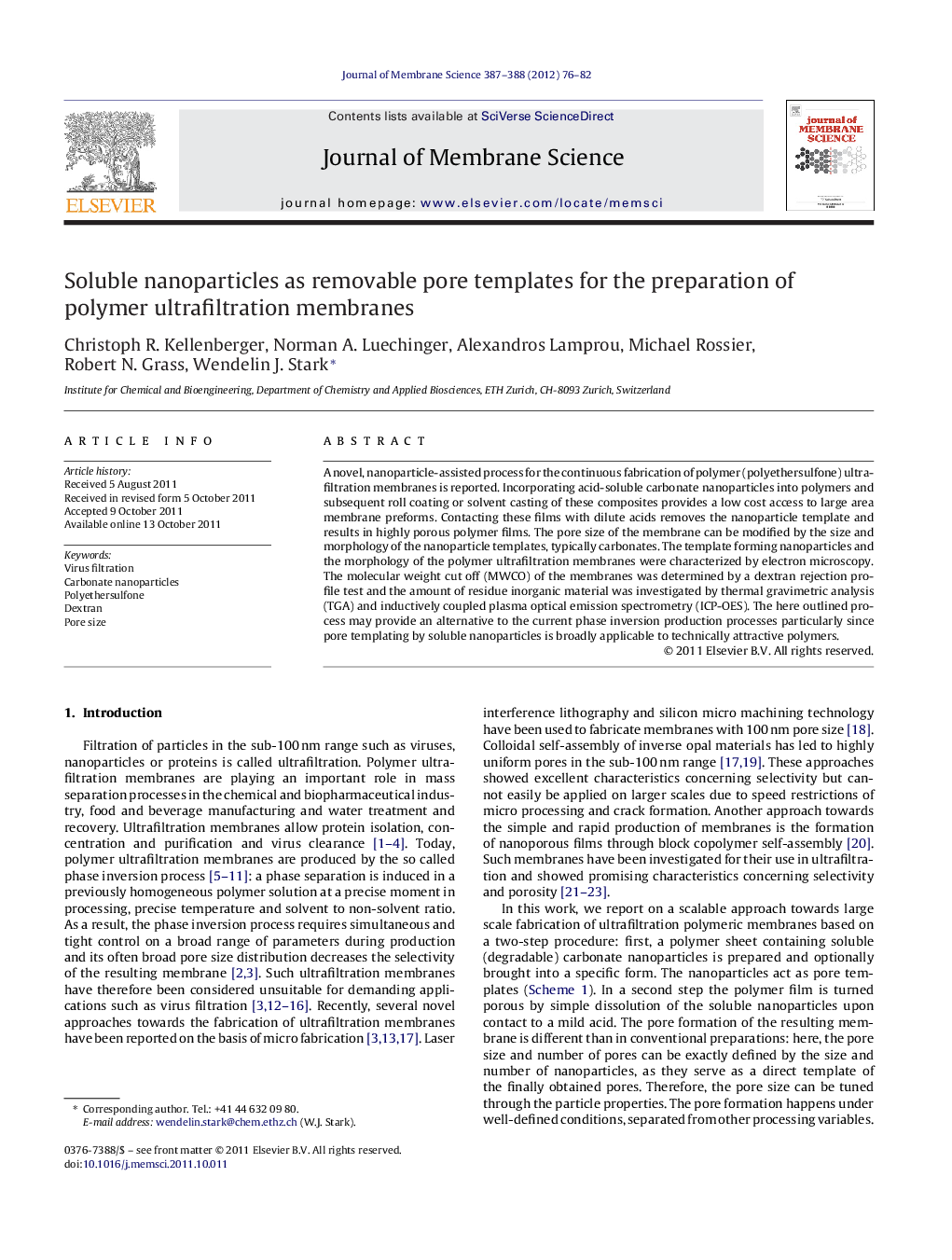| Article ID | Journal | Published Year | Pages | File Type |
|---|---|---|---|---|
| 635345 | Journal of Membrane Science | 2012 | 7 Pages |
A novel, nanoparticle-assisted process for the continuous fabrication of polymer (polyethersulfone) ultrafiltration membranes is reported. Incorporating acid-soluble carbonate nanoparticles into polymers and subsequent roll coating or solvent casting of these composites provides a low cost access to large area membrane preforms. Contacting these films with dilute acids removes the nanoparticle template and results in highly porous polymer films. The pore size of the membrane can be modified by the size and morphology of the nanoparticle templates, typically carbonates. The template forming nanoparticles and the morphology of the polymer ultrafiltration membranes were characterized by electron microscopy. The molecular weight cut off (MWCO) of the membranes was determined by a dextran rejection profile test and the amount of residue inorganic material was investigated by thermal gravimetric analysis (TGA) and inductively coupled plasma optical emission spectrometry (ICP-OES). The here outlined process may provide an alternative to the current phase inversion production processes particularly since pore templating by soluble nanoparticles is broadly applicable to technically attractive polymers.
► Novel and scalable process for the fabrication of ultrafiltration membranes. ► Soluble nanoparticles as nanopore forming template. ► Pore size tunable through the particle properties. ► Narrow pore size distributions with associated high selectivity. ► Low-cost single use membranes for biotechnological separation processes.
